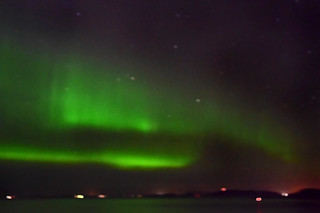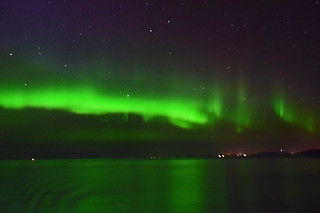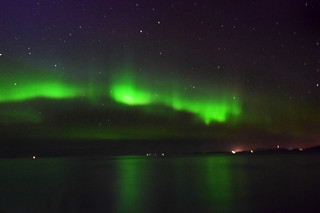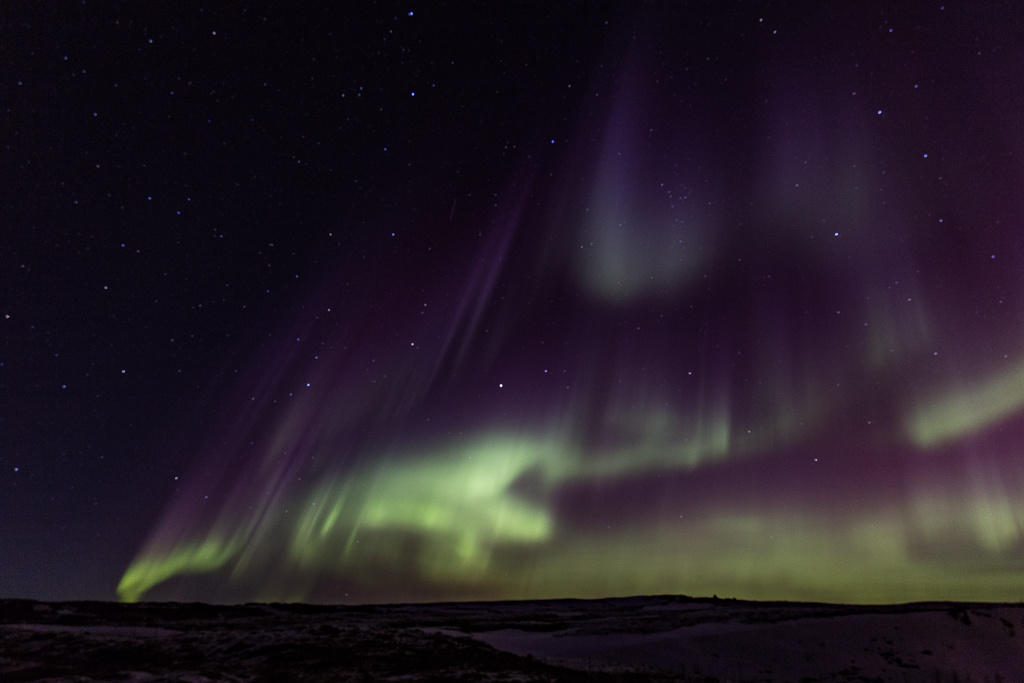Great advice, all - thanks
Well, it didn't quite go according to plan
Nothing was seen during the nights spent on land - there was an alert one night on board ship that they had been seen
So, with camera on tripod, release cable, settings as advised, I ventured out to take a look
NOTHING TO BE SEEN
I was aware of greyish "clouds" in the night sky as the ship endeavoured to make up time lost due to gales earlier
Anyway, having set it up, I clicked away - and found that, although the naked eye saw nothing, the camera picked up the aurora
GREAT!
Only drawback was that we were moving and distant shore lights and stars reflected movement with long exposure
I cut back exposure, but this sadly led to a lot of noise
I have selected three images - they're pretty awful, I'm sure you'll agree, but they do give some idea of what the aurora was like (to the camera, anyway!)
I'm sad that I don't have better images, but pleased that I do have a record of something I've not seen before - and won't ever see again
THANKS AGAIN, ALL!

Northern Lights, Norway 1 - 30 Jan 2017 by
Midland Red, on Flickr

Northern Lights, Norway 2 - 30 Jan 2017 by
Midland Red, on Flickr

Northern Lights, Norway 3 - 30 Jan 2017 by
Midland Red, on Flickr





